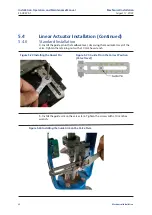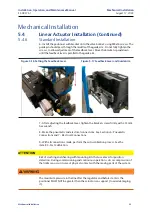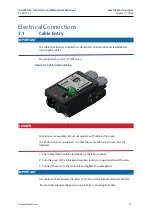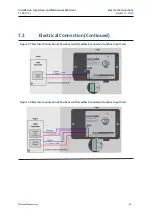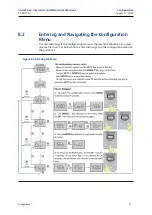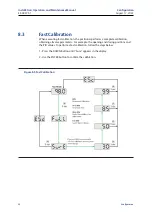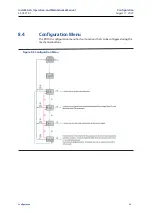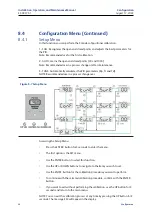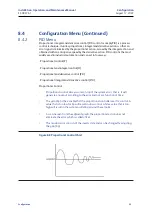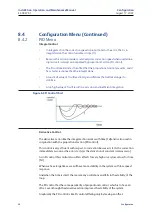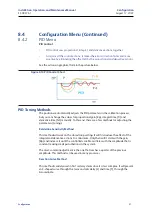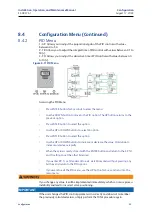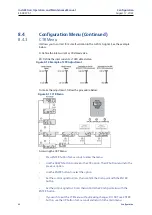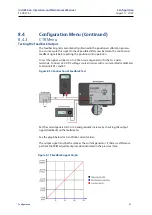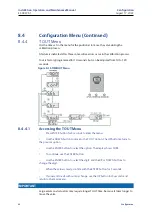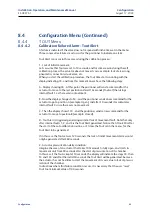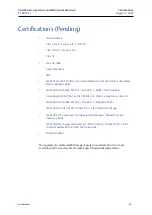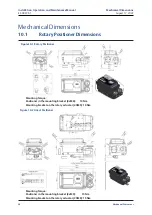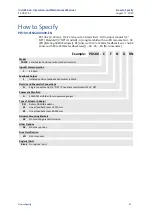
Configuration
36
Installation, Operation, and Maintenance Manual
ES-09373-1
Configuration
August 17, 2022
8.4
Configuration Menu (Continued)
8.4.2
PID Menu
Integral Control
•
In integral action the correction speed is proportional to the error, that is, in
integral action the control variable is time (Tr).
•
Because this action provides a relatively slow correction speed when used alone,
in practice it is always accompanied by proportional action (PI control).
•
The PI control eliminates the offset that the proportional control presents, and it
has a faster response than the integral alone.
•
A too small value of Tr will lead to large oscillations that will take longer to
stabilize.
•
A too high value of Tr will result in a very slow and inefficient integration.
Derivative Control
The derivative action like the integral action works with time (Td) and is also used in
conjunction with the proportional action (PD control).
This control is very efficient with respect to correction because it starts the correction
immediately as soon as the error starts (as the derivation of constant is always zero).
As in PI control this control also suffers effects for very high or very low values for time
(Td).
When we have large times, we will have more stability in the system with low-speed
response.
And when the time is small, there are many oscillations and falls in the stability of the
loop.
The PD control has the same peculiarity of proportional control, which is to have an
offset, even though the derivative action improves the stability of the system.
Graphically the PD control is like PI control differing only by leaving an offset.
Figure 8-9 PI Control Chart

